1 min read
HubSpot vs Pardot MAS (Which Is Better for Lead Nurturing?)
Why should you care about marketing automation systems (MAS)? A marketing automation system is a tool that combines many different functions of...
I know what I am looking for, and would like to chat.
A team of data-driven marketers obsessed with generating revenue for our clients.
Because the proof is in the pudding.
At Campaign Creators we live by three principles: Autonomy, Mastery, Purpose.

Developing a lead nurturing campaign can produce huge ROI for your business, yet it can easily turn into a huge time investment for your team! While most 3-layer lead nurturing campaigns can take months to develop from scratch, yours doesn't have to.
If you're looking to quickly generate better qualified leads for your sales team, a lead nurturing campaign may be the best solution for you.
By the time you finish reading this article, you’ll know all the steps to successfully pull off a perfect B2B Lead Nurturing Campaign quickly. Let’s get started…
The most successful lead nurturing campaigns are those that sprinkle a little creativity, but also tell an educational story. By having multiple touch points within these types of campaigns, you’ll get to funnel contacts and identify your highly qualified leads to learn more about your business. By the time they reach the end of the campaign, they’ll feel ready and compelled to start a sales conversation.
One way we helped a previous client tell a story through their lead nurturing funnel was by developing a “pick your own adventure” journey. Depending on the service a contact showed interest in, they were then funneled through a tailored journey to learn more about the business through blogs, guides, and case studies. This process helped them generate hundreds of new leads in a matter of months! Furthermore, with the help of our team’s strategy and their team’s content creation, we developed a variety of assets for different leads. Here’s an example of a guide we created for them that garnered outstanding results, including a 24% conversion rate!
.png?width=294&name=Careerminds_The_Essential_Guide_To_Handling_A_Layoff_Cover%20(2).png)
In order to tell a story, your business needs different premium assets that service different stories: one TOFU (top-of-funnel) asset and one MOFU (middle-of-funnel) asset.
Think of your TOFU premium asset as a high level introduction to your services. Use keyword research to determine the topics or pain points that are most popular within your target industry. Chances are people with these pain points want to find material to help fix their problems—and they would be very willing to do so in exchange for their email address!
Remember you don’t want to limit your target audience to just your database. If organic visitors can find your premium assets online, then that’s an extra entry point into your campaign. Some examples of TOFU assets and lead magnets you can introduce into your lead nurturing campaign include:
Once you have a thoughtful TOFU asset in mind, it’s time to drill down on the solution of your audience’s pain points (aka your services). By introducing their problem at hand in the TOFU stage, your interested contacts who have filled out the TOFU landing page form will likely want more information on how to solve their issue.
With a MOFU premium asset, you can give these leads information on multiple solutions, but also identify your business as the best solution for their needs. Some examples of low level asset types you can use in your campaign as your MOFU are:
With a solid TOFU and MOFU ready to go, your BOFU (bottom-of-funnel) asset should be fairly simple for your B2B lead nurturing campaign: get in touch with a representative. At the end of the day, the whole purpose of this campaign is to get your qualified leads in front of you and ready to purchase your services.
Typically this is where you’ll begin your strategy. At Campaign Creators, we like to make this easy by creating an all encompassing strategy doc that outlines the following:
What is your business trying to achieve? Think of a SMART goal. Something that is specific, measurable, achievable, realistic and timely.
For example, Company X’s goal is to increase SQLs by Y% by the end of the quarter.
What is currently holding your business back from achieving those results? Sometimes it’s because the proper segmentation hasn’t been put into place or there have been no automated workflows created to kick off this type of campaign.
Who is your business targeting? Think back to your buyer personas! If your business doesn’t have any, it’s a good idea to create those first before moving forward with your strategy. You can learn how to create your ideal buyer personas here.
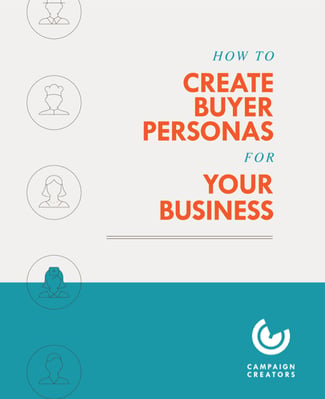
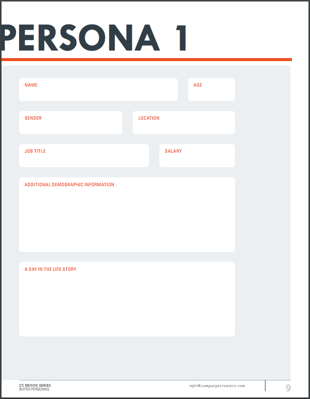
At a high level, what would be a viable solution for your business’s problem? This would likely be the type of campaign you would like to run.
For example, if your company was having trouble reconnecting with cold leads, the solution may be to create some type of rewarming or re-engagement campaign.
What are the most important key performance indicators for your business? Every business is different—if you focus on eCommerce order count, revenue would be an important KPI. If you’re in the B2B world, the number of sales conversations or meetings booked would be great to measure.
In either case, there are a few standard marketing KPIs you should track in any given campaign, including:
This is the bread and butter of your strategy. Determining your campaign flow will help you paint a verbal picture of who would get enrolled in your campaign and how they would funnel through the TOFU, MOFU, and BOFU.
A visual workflow is meant to support the verbal material in the above section. Especially for complex lead nurturing campaigns, this will help visual learners understand how leads can funnel through.
A helpful tool we like to use is GERU. In just 15 minutes, you can craft a complex yet digestible campaign map for your lead nurturing campaign. Here’s an example of the GERU mapping tool:
These will be all the materials needed to make the campaign happen, including landing pages, forms, and emails. We’ll go a little more in depth on this topic later on.
Based on the scope of the project, determine the estimated time to get this campaign live from start to finish. Depending on the complexity of the campaign, your lead nurturing campaign may take longer than 1 month. However, for most traditional 3 stage funnels 1 month is all you need to deliver quick results.
This helps us plan what to start on when the strategy is sound and, more importantly, approved. Especially if there’s multiple stakeholders or team members working on your project, you can assign who is in charge of doing what during this time.
Now that your strategy is approved, it’s time to move to building your campaign shell. Create copy briefs to send to your content creation team and recycle any templates you can use again for your emails or landing pages. If you need to start from scratch, pull in your designer during this phase so that content and design come together accordingly.
Here are some helpful tips to get you started.
A typical lead nurturing campaign will comprise of 9 emails, 5 Landing Pages, and 2 premium assets. This can be organized accordingly:
For email briefs, make sure to include:
For landing page briefs, make sure to include:
While a lead nurturing campaign can consist of 9 emails, this doesn’t mean you’ll need 9 templates.
To make things more efficient, develop master templates for your emails and landing pages that include all kinds of module designs you can use. You also want each of these templates to have your business’ branding applied, including hex colors, fonts, logos, imagery, etc.
If you’re looking for master email templates or landing pages that you can use for HubSpot, checkout our marketplace Express by Campaign Creators. Here is an example of the All Industries Master Email Template you can download to your HubSpot portal immediately:
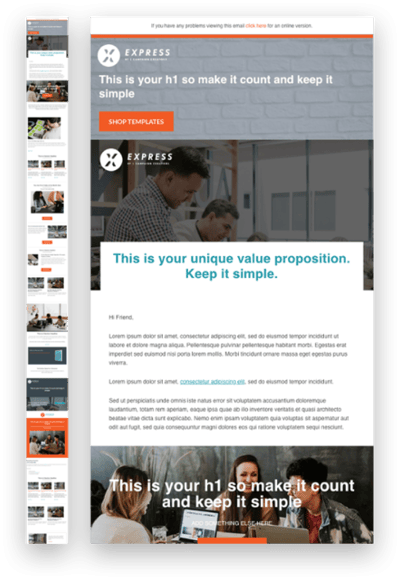
While templates can help you speed up the process to launching a new lead nurturing campaign, you don’t want to skip out on customizing your premium assets.
For premium assets, pull in your designer to create something tailored to your business.
Now that the content and design direction have been solidified, it’s time for your copywriters and developers to take center stage. Always check in to review pending items and provide any necessary feedback. That way, you won’t find your team rushing during the 11th hour to get campaign pieces together.
Since email and landing page templates are fairly easy to port over into your HubSpot portal, it’s just a matter of having your development team apply any branding changes.
Once those are complete, you can begin creating the campaign shell using HubSpot’s Workflows. A standard lead nurturing campaign follows these typical workflow actions.
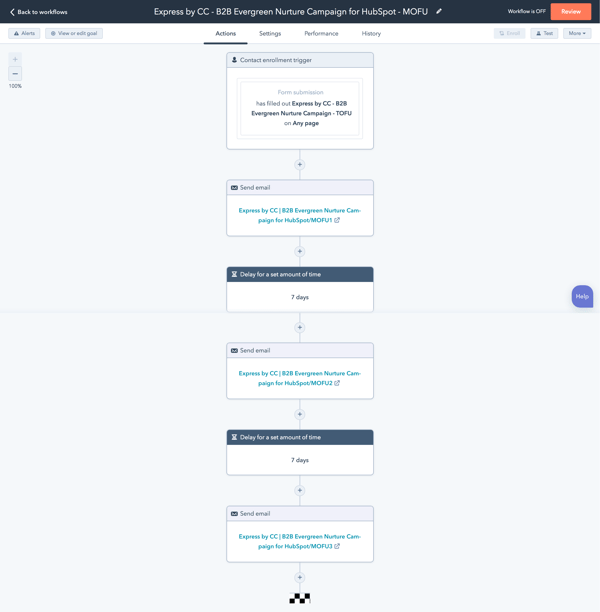 MOFU Workflow Example
MOFU Workflow Example
After the campaign shell has been created and all other materials have been approved (copy, premium assets, branded templates), it’s time to populate all email templates and landing pages.
This is where naming conventions become really helpful in making sure you populate the correct templates with the right content. Most the of the campaign shells will look identical, so it’s easy to get assets mixed up. But if there’s anything more important than building your actual campaign, it would likely be the next step.
At this stage in the campaign, you’re nearing the finish line. You should be able to see it about a hundred yards away. But before you even think of launching that campaign for the world to see, you need to bake in some time to review your work.
Before launching those lead nurturing emails, here are a few things to check in your HubSpot emails.
Edit Tab
Settings Tab
Recipients Tab
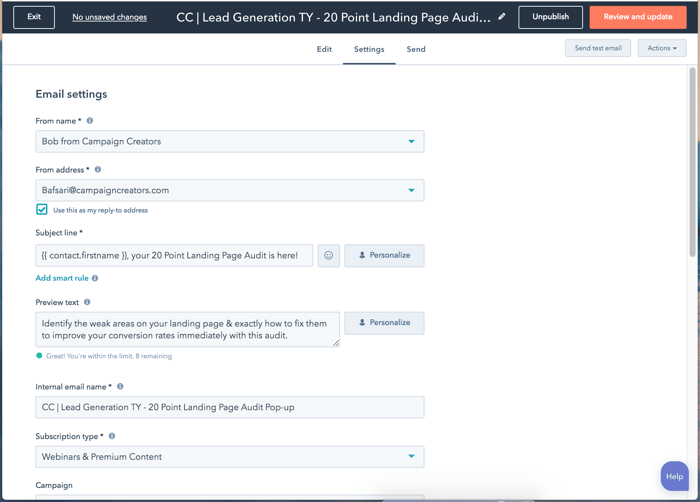
HubSpot Email Settings Tab Example
Before publishing your landing pages, here a few things to check.
Content Tab
Settings Tab
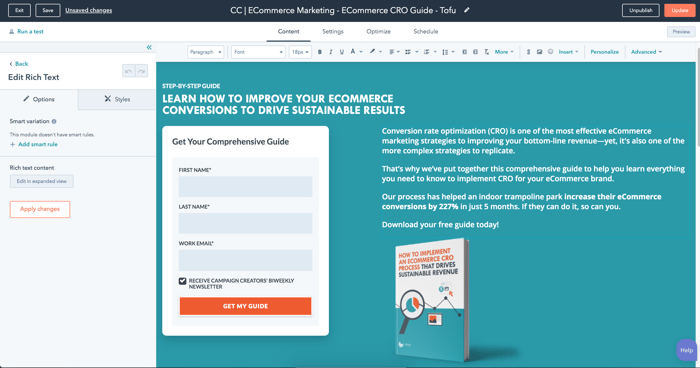
HubSpot Landing Page Content Tab Example
Look for any potential broken links, check for mobile responsiveness, and scan for any spelling errors. This campaign should be looked at by several different eyes from the team to ensure nothing gets missed.
Go ahead and give yourself a pat on the back! It’s been a long time coming, and now you’re ready to fly. Before launching, triple check your workflows and make sure your enrollment is set correctly. We like to add a short 1-hour delay at the beginning of launching a campaign, just in case we spot something that needs a quick fix.
Once everything looks good, turn your workflows live, sit back, relax, and watch your qualified leads come through!
If you enjoyed learning how to get a lead nurturing campaign up and running in 1 month, then I’m positive you’ll enjoy our comprehensive Lead Nurturing Masterclass. Learn how to implement your next out-of-this-world lead nurturing strategy using this free, 10 lesson course that includes videos, infographics, exercises, and more.
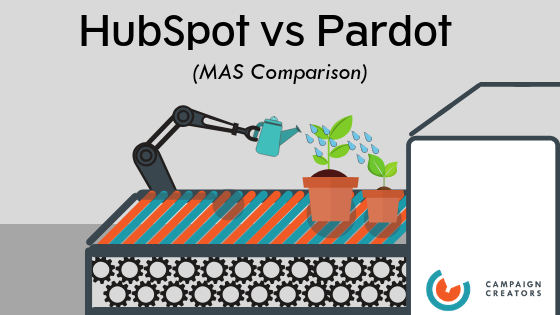
1 min read
Why should you care about marketing automation systems (MAS)? A marketing automation system is a tool that combines many different functions of...
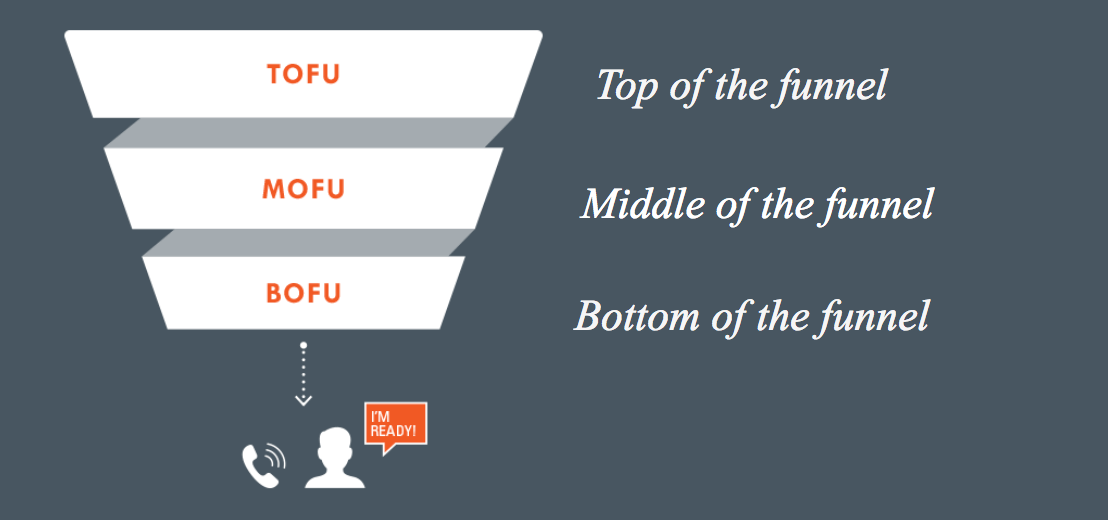
According to research done by Forrester, companies that excel at lead nurturing generate 50% more sales ready leads at 33% lower costs. Why is it...

Lead nurturing, when executed efficiently and thoughtfully, is the difference between generating awareness and leads and generating actual customers....